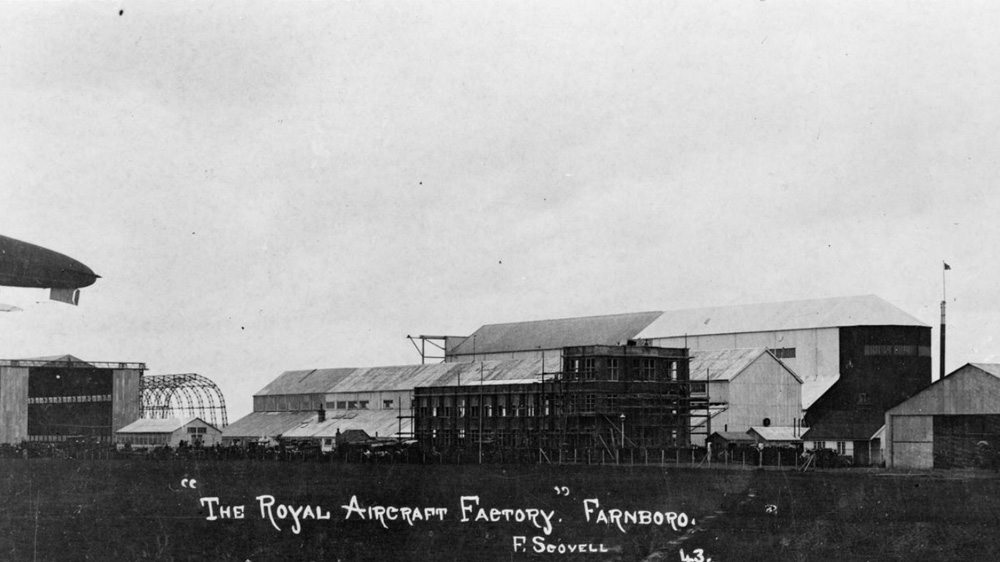Royal Aircraft Factory
| < First Flight across the Forth | Δ Index | First Navy Pilots > |

Genesis of the Factory
In 1879 the Royal Engineers established the first permanent ballooning establishment – the Balloon Equipment Store at Woolwich. By 1897 the service was based at Aldershot and officially renamed the Balloon Factory. When space began to run short it moved to the famous site at Farnborough in 1905.
The Balloon Factory became interested in powered flight in 1906, the year in which the Wright Brothers were finally awarded a patent for their control methods.
The Factory’s first successful powered flight came on 10 September 1907, when the airship Nulli Secundus took to the air for the first time. This success increased the public awareness of the factory, and on 1 April 1908 it became His Majesty’s Balloon Factory.
The first heavier-than-air flight took place late in 1908 and involved an aircraft designed by an expatriate American, Samuel Franklin Cody.
Over the winter of 1908-09 a subcommittee of the Committee of Imperial Defence decided that all heavier-than-air experiments at the Balloon Factory should end.
On 25 July 1908 the committee’s decision was made to look impressively short-sighted, when Louis Blériot flew across the English Channel, landing at Dover. On 10 October 1910 the Balloon School’s remit was enlarged to include aeroplanes, and one week later the Balloon Factory was given the task of maintaining those aircraft.
On 26 April 1911 the Factory was renamed again, this time as His Majesty’s Aircraft Factory. It was finally renamed as the Royal Aircraft Factory on 11 April 1912. Official permission to design new aircraft only came on 14 November 1913.
This venture was met with much scepticism and even hostility from some quarters who believed that it would be better to trust in competition between private companies to speed development.
The “Aeroplane” magazine was very much in this camp.
In June 1911, The Minister of War announced that the Air Battalion possessed ten aeroplanes.
“Aeroplane” responded:
Ten little aeroplanes on paper look so fine,
One is an ancient Wright, and so there are nine.
Nine little aeroplanes, somewhat up-to-date,
The “Type XII.” Bleriot really makes eight.
Eight little aeroplanes, rather less or more,
Half ain’t delivered yet, and so there are four.
Four little aeroplanes, on the’ ground so free,
Someone tried the Farman, and then there were three.
Three little aeroplanes, on the ground to view,
Up went the de Havilland, and then there were two.
Two little aeroplanes, Paulhan’s “’bus” was fun!
But when it came to landing it — then there was one.
One little aeroplane, engine over-run,
Playing on the test-bench, and then there was none.
| < First Flight across the Forth | Δ Index | First Navy Pilots > |